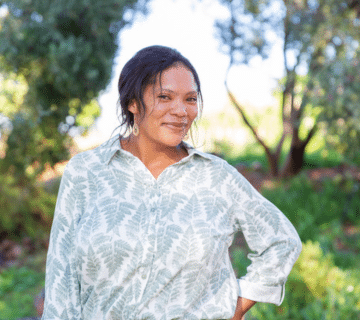Climb slopes dense with creeper-festooned trees on the track of Mountain gorillas, golden monkeys and forest birds.
June to August
Scroll for more
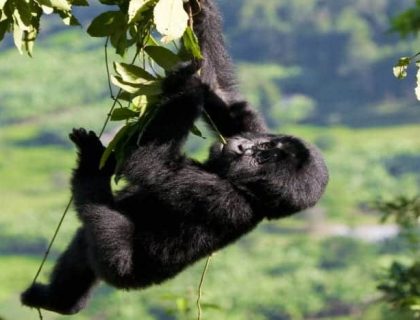
Bwindi is a UNESCO-listed rainforest of steep ridges and gullies: home to mountain gorillas and a treasure-trove of birds and butterflies. It spans 32,000 ha with exceptional biodiversity, with over 160 tree species and 100 types of ferns). So even the walk to your gorilla family feels like a nature documentary—minus the voice-over.
Visitor numbers are strictly limited to protect the semi-habituated gorilla families. So for peak dates in the drier seasons, this means booking well in advance. The upside? An intimate, well-managed experience that keeps conservation front and centre.
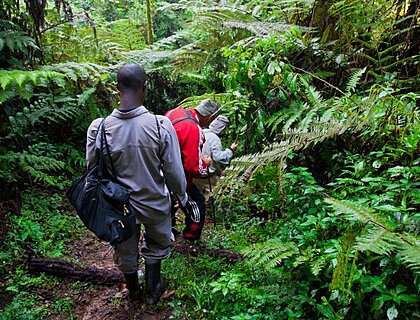
You are divided into groups of maximum eight people and each hiking group treks to a different gorilla family. They try to match the groups’ hiking distance to your fitness, but this is not an exact science. So be prepared for several hours of hiking at altitude. The altitude ranges from 1,160m to 2,600m so mornings can be cool.
However it is a magical experience. The dense undergrowth of the valley floor is eerily quiet. And you feel as if your steps are disturbing the smells and sounds of ancient Africa. After unhurried steady climbing, there is nothing to match the thrill of that first soft grunt in the vines.
Once you find your family, you are allowed to spend a magical hour with them, before retracing your steps back to the trail starting point.
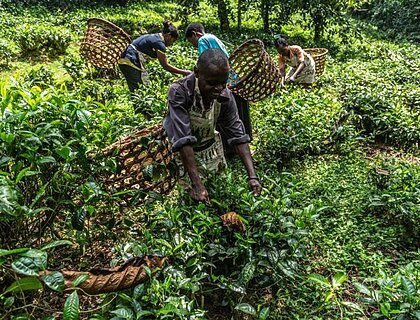
Uganda treks in Bwindi often involve longer, more strenuous hikes than in Rwanda, brilliant if you want a sense of the full rainforest eco-system. The adventurous terrain adds to the excitement of the whole experience.
As a (very) general rule, the trekking time to reach ‘your’ allocated family group is generally longer in Uganda than in Rwanda.
And if you’re combining gorillas with a broader safari, Uganda’s network of wildlife parks and lodges makes a compelling story for Uganda
Check out our article for more info
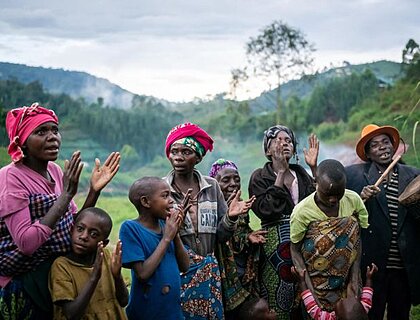
Bwindi offers exceptional biodiversity and thus wildlife. As well as gorillas, there are chimpanzees, black-and-white colobus, and golden monkeys, plus forest elephant, bushpig and small antelope.
The flora spans lowland and montane biomes resulting in 200+ butterfly species. Plus over 340 bird species, over 25 of which are endemic. So a birder’s happy place!
Gorilla permits are $800 per person. Whilst the new Gorilla Habituation experience is $1,500 per person.
There are four different trail starting points - Buhoma, Ruhija, Rushaga or Nkuringo – to manage conservation efforts. Try to choose them deliberately depending on where you are staying, rather than booking too late and having to go with what’s available.
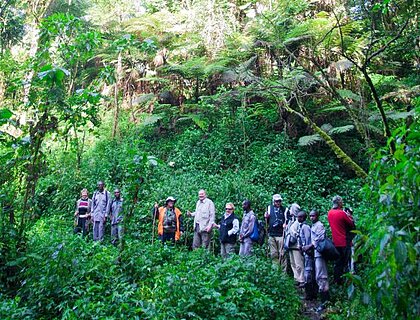
Peak months can sell out early; permits may require booking up to a year ahead to secure preferred dates.
How many people can visit a gorilla group, and for how long?
Max 8 visitors per group; standard visits are 1 hour once you reach them. Keep ~10 m distance and follow ranger guidance for the gorillas’ health.
What’s the difference between trekking and the Habituation Experience?
Trekking allows you one hour with a fully habituated family. The Gorilla Habituation experience (in Rushaga) gives you up to 4 hours observing researchers with a semi-habituated group, but note that there are far fewer daily permits available
When is the best time for gorilla trekking
Ideally choose one of the drier months e.g. June to August or December to February. As this mean firmer, less muddy trails. Rainy months can be photogenic but tricky under foot. Great for birding, but tougher on the calves.
Ready to pair Bwindi’s gorillas with Uganda’s classic safari parks? Let’s map your route.
Buhoma Lodge, an intimate and charming property that has spectacular and uninterrupted views of the Bwindi Impenetrable Forest National Park. It is a luxury lodge but in a rustic and simple style. Nothing fancy, however what a fantastic location! You can just walk into the village and to the start of the Gorilla treks (dependent … Read More
